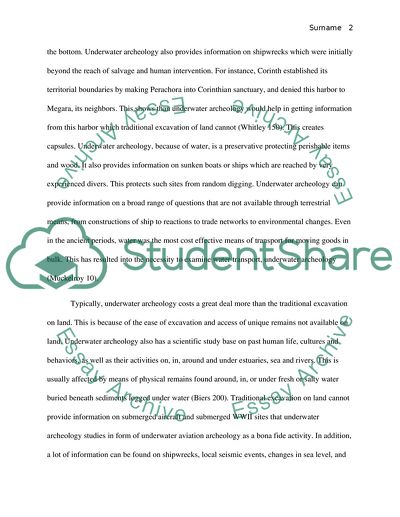Cite this document
(“What kind of information does underwater archaeology provide that Essay”, n.d.)
What kind of information does underwater archaeology provide that Essay. Retrieved from https://studentshare.org/archaeology/1615263-what-kind-of-information-does-underwater-archaeology-provide-that-traditional-excavation-on-land-cant-what-does-the-ulu-burun-or-ka-shipwreck-tell-us-about-trade-and-the-distribution-of-commodities-in-the-late-bronze-age
What kind of information does underwater archaeology provide that Essay. Retrieved from https://studentshare.org/archaeology/1615263-what-kind-of-information-does-underwater-archaeology-provide-that-traditional-excavation-on-land-cant-what-does-the-ulu-burun-or-ka-shipwreck-tell-us-about-trade-and-the-distribution-of-commodities-in-the-late-bronze-age
(What Kind of Information Does Underwater Archaeology Provide That Essay)
What Kind of Information Does Underwater Archaeology Provide That Essay. https://studentshare.org/archaeology/1615263-what-kind-of-information-does-underwater-archaeology-provide-that-traditional-excavation-on-land-cant-what-does-the-ulu-burun-or-ka-shipwreck-tell-us-about-trade-and-the-distribution-of-commodities-in-the-late-bronze-age.
What Kind of Information Does Underwater Archaeology Provide That Essay. https://studentshare.org/archaeology/1615263-what-kind-of-information-does-underwater-archaeology-provide-that-traditional-excavation-on-land-cant-what-does-the-ulu-burun-or-ka-shipwreck-tell-us-about-trade-and-the-distribution-of-commodities-in-the-late-bronze-age.
“What Kind of Information Does Underwater Archaeology Provide That Essay”, n.d. https://studentshare.org/archaeology/1615263-what-kind-of-information-does-underwater-archaeology-provide-that-traditional-excavation-on-land-cant-what-does-the-ulu-burun-or-ka-shipwreck-tell-us-about-trade-and-the-distribution-of-commodities-in-the-late-bronze-age.


